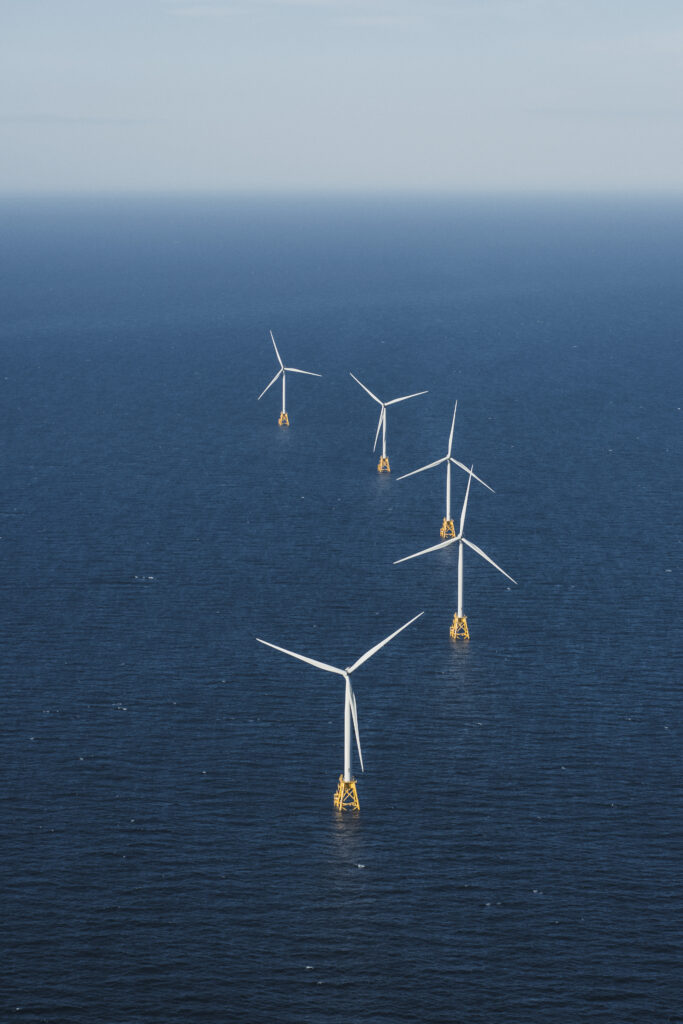- Annual renewable capacity additions increase 45 percent in 2020, the highest year-over-year increase in more than two decades
- Rapid expansion of wind energy installations in 2020 expected to cool down in near future
- Forecast by the International Energy Agency does not take the Biden administration’s climate goals into account
Summary by Dirk Langeveld
Renewable energy sources recorded their highest annual increase in capacity additions in more than two decades, according to a recent report by the International Energy Agency. Solar is poised for significant growth as it becomes more competitive against fossil fuels, but the IEA anticipates that wind power will decline slightly in the near future.
Despite a drop in demand for other fuels amid the COVID-19 pandemic, annual renewable capacity additions increased 45 percent in 2020 to almost 280 gigawatts. This was the highest year-over-year increase since 1999.
The average annual net capacity additions in renewable energy rose from 155 GW in 2014-2016 to 183 GW in 2017-2019. The IEA predicts that high capacity additions will become commonplace in 2021 and 2022, with renewables making up 90 percent of new power capacity expansion worldwide. It anticipates annual net capacity additions to average 276 GW in 2020-2022.
The IEA’s forecast does not factor in the Biden administration’s climate goals, which include $600 billion in President Joe Biden’s infrastructure proposal for clean energy initiatives, a target to halve greenhouse gas emissions in the United States by 2030, and a goal of installing 30 GW of offshore wind capacity by the same year. The IEA says these initiatives would drive faster deployment of renewables in the near future.
Solar
The IEA forecasts that solar photovoltaic annual additions will grow 8 percent in 2021 to more than 145 GW, reaching 162 GW by 2022. This would represent a nearly 50 percent increase above 2019 levels.
Utility-scale solar PV additions will account for the vast majority of these installations. The IEA anticipates that their share of new solar capacity will increase from over 55 percent in 2020 to nearly 70 percent in 2022.
The United States saw both solar and onshore wind developers scrambling to complete projects before the expiration of a federal tax credit at the end of 2020. However, the IEA offered a more optimistic forecast for the U.S. after the credit was extended, with Biden calling for a further 10-year extension.
The report notes how solar capacity in the U.S. dropped at the outset of 2020 due to the pandemic, but recovered and grew in the latter part of the year. It suggests that tax credits and sustained cost declines could lead to distributed PV making up 30 percent of all PV growth in the U.S. in 2021 and 2022.
Although falling solar costs are making the option cheaper than coal and natural gas, the IEA cautioned that there is short-term uncertainty in PV prices due to supply chain disruptions and higher commodities prices, including steel and copper. It expects that these issues will be resolved by the end of 2021.
Wind
Global wind energy installations added 114 GW in new capacity in 2020, an increase of 90 percent over 2019. This pace is expected to slow to about 83 GW in 2021 and 77.6 GW in 2022, but this would still represent a 50 percent increase over the 2017-2019 average.
China accounted for two-thirds of new wind capacity in 2020 as developers capitalized on incentives before their expiration. While a slowdown in wind energy development is anticipated in this market, growth elsewhere is expected to offset it.
The U.S. added 16.9 GW in onshore wind capacity in 2020. This growth is expected to decline to 13.1 GW in 2021 and 8.8 GW in 2022 since many developers kicked off projects in 2020 to receive a tax credit, thus reducing the number of projects in the pipeline for the near future. However, the extension of the tax credit increased the forecast slightly.
Offshore wind accounted for a 6.3 GW, a record 10 percent of new wind capacity in 2019, but this share declined in 2020 as new offshore capacity increased just 0.1 GW. However, it is expected to grow 60 percent and make up 12 percent of new wind capacity in 2021-2022, with the IEA forecasting 10.2 GW of new capacity in 2021 and 9.1 GW in 2022.
China is again expected to lead in this sector, with the IEA forecasting that it will make up 60 percent of new offshore wind capacity. This is again credited to a development push before the expiration of an incentive at the end of 2021 before a decline in 2022.
While several offshore wind farms are in development off the East Coast of the U.S., the IEA expects that offshore wind projects in nations such as the United Kingdom, Netherlands, Germany, Denmark, and France will outpace American development.








